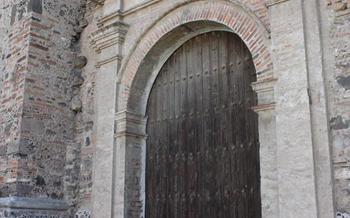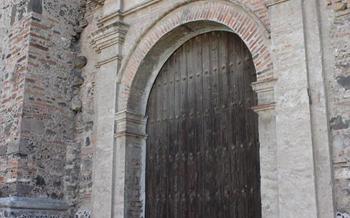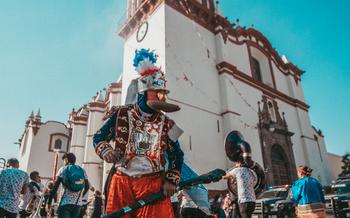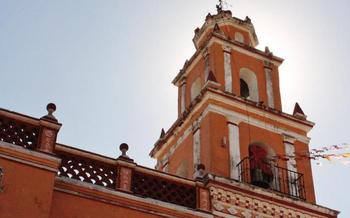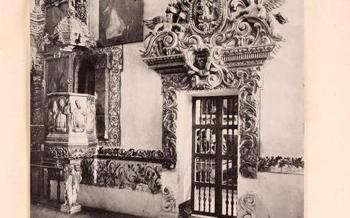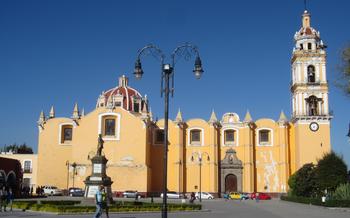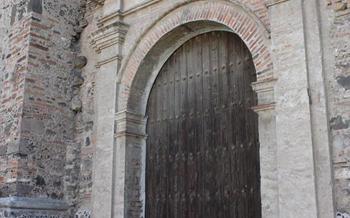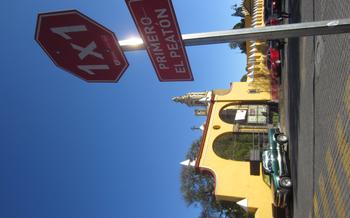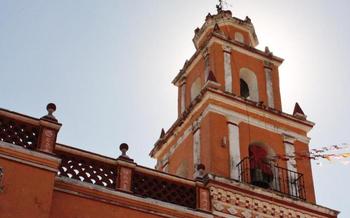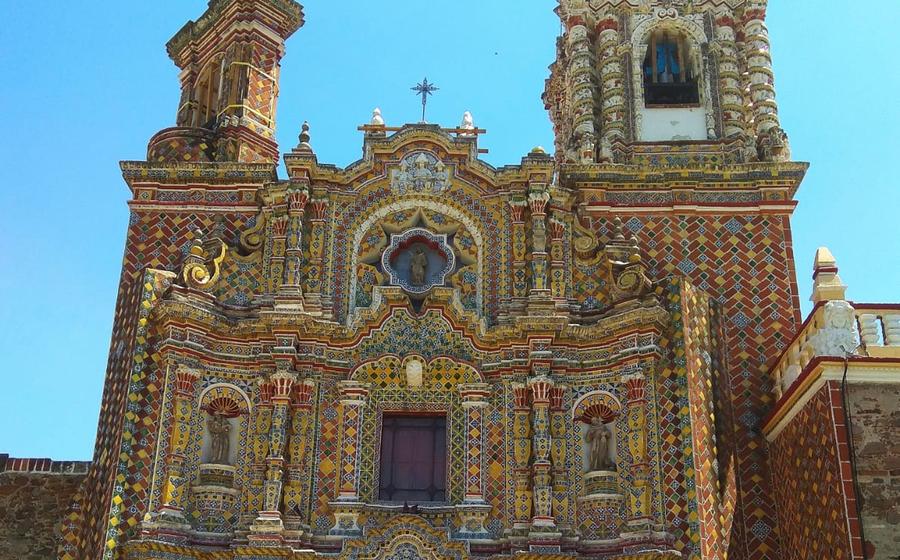
Templo de San Francisco Acatepec
- The Architectural Style of the Templo de San Francisco Acatepec
- The Interior of the Templo de San Francisco Acatepec
- The Exterior of the Templo de San Francisco Acatepec
- The Convent of San Francisco Acatepec
- The Atrium of the Templo de San Francisco Acatepec
- The Templo de San Francisco Acatepec as a UNESCO World Heritage Sitepec was designated a UNESCO World Heritage Site for its outstanding universal value. The temple met several criteria for inclusion on the World Heritage List. First, it is an exceptional example of the fusion of European and indigenous architectural styles. Second, it is a well-preserved example of a 16th-century Franciscan convent. Third, it is a significant landmark in the city of Cholula and is an important part of the region's cultural heritage.
- Things to See and Do in the Templo de San Francisco Acatepec
- Tips for Visiting the Templo de San Francisco Acatepec
- Insider Tip
The Architectural Style of the Templo de San Francisco Acatepec
The Templo de San Francisco Acatepec is a masterpiece of Mexican colonial architecture. It combines elements of Gothic, Renaissance, and Baroque styles, creating a unique and harmonious whole. The church is constructed of stone, brick, and tile, and features elaborate carvings and decorations. The influence of indigenous artistic traditions is evident in the use of bright colors and intricate patterns. The result is a stunningly beautiful building that is both awe-inspiring and inviting.
The fachada of the church is particularly impressive. It is divided into three sections by pilasters, and features a central doorway flanked by two niches. The niches contain statues of San Francisco and San Antonio, the patron saints of the church. The doorway is surmounted by a large window, which is in turn topped by a pediment. The pediment is decorated with a relief carving of the Virgin Mary and Child.
The interior of the church is equally impressive. The nave and aisles are separated by massive pillars, which support a vaulted ceiling. The transept and apse are decorated with elaborate carvings and paintings. The choir and sanctuary are located at the east end of the church, and are separated from the nave by a rood screen. The altars and other furnishings are made of wood and are richly decorated with gold leaf and paint.
The Interior of the Templo de San Francisco Acatepec
The interior of the Templo de San Francisco Acatepec is as impressive as its exterior. The nave and aisles are separated by massive stone columns, and the walls are lined with intricate carvings and paintings. The transept and apse are home to the main altar, which is a masterpiece of Baroque art. The choir and sanctuary are located at the east end of the church, and they are decorated with beautiful stained glass windows. The altars and other furnishings of the church are also works of art, and they contribute to the overall beauty and majesty of the interior.
It is also worth noting the presence of several side altars dedicated to various saints, each one with its own unique characteristics. These altars are often elaborately decorated with paintings, sculptures, and other ornaments, and they provide an insight into the diverse and vibrant religious traditions of the region.
Overall, the interior of the Templo de San Francisco Acatepec is a testament to the skill and artistry of the Franciscan friars and the indigenous craftsmen who worked together to create this masterpiece. It is a must-see for anyone interested in Mexican history, art, or architecture.
The Exterior of the Templo de San Francisco Acatepec
The exterior of the Templo de San Francisco Acatepec is as impressive as its interior. The fachada is a masterpiece of Gothic architecture, with its elaborate carvings and decorations. The bell tower, which rises above the main entrance, is a landmark of the city of Cholula. The atrium, which surrounds the church, is a large, open space that is used for religious and community events. The surrounding gardens are a peaceful oasis in the heart of the city.
The fachada of the Templo de San Francisco Acatepec is divided into three sections. The central section is the tallest and widest, and it is flanked by two smaller sections. The central section is dominated by a large, arched doorway, which is surrounded by elaborate carvings. The carvings depict scenes from the life of Jesus Christ and the Virgin Mary. The two smaller sections are each adorned with a rose window.
The bell tower of the Templo de San Francisco Acatepec is a tall, slender structure that is made of stone and brick. The tower is divided into three sections. The first section is square, and it is home to the bells of the church. The second section is octagonal, and it is decorated with elaborate carvings. The third section is round, and it is topped by a cross.
The atrium of the Templo de San Francisco Acatepec is a large, open space that is surrounded by a wall. The wall is made of stone and brick, and it is decorated with sculptures and fountains. The sculptures depict scenes from the life of Jesus Christ and the Virgin Mary. The fountains provide a refreshing oasis in the heat of the Mexican sun.
The Convent of San Francisco Acatepec
The Convent of San Francisco Acatepec was founded in 1549 by the Franciscans. It was one of the first Franciscan convents in Mexico and played an important role in the evangelization of the region. The convent was built around a large central courtyard, with the church on one side and the living quarters of the friars on the other. The convent also had a large garden, which was used to grow food for the friars and the community.
The convent was abandoned in the 19th century, and it fell into disrepair. However, it was restored in the 20th century and is now open to the public. The convent is a beautiful example of colonial architecture, and it is a popular tourist destination.
The convent is now used for a variety of purposes, including as a museum, a cultural center, and a school. It is also home to a community of Franciscan friars. The convent is an important part of the community of Cholula, and it plays an important role in the city's cultural and religious life.
The Atrium of the Templo de San Francisco Acatepec
The atrium of the Templo de San Francisco Acatepec is a large, open space that surrounds the church. It is enclosed by a wall with four gates, one on each side. The atrium is paved with stone and features a number of sculptures and fountains. It was originally used for religious ceremonies and community events, and it continues to be used for these purposes today. The atrium is a popular place for visitors to relax and enjoy the peaceful atmosphere of the church.
The atrium of the Templo de San Francisco Acatepec is a beautiful and historic space that is an integral part of the church. It is a place where visitors can learn about the history of the church and the community of Cholula, and it is a place where they can come to pray and reflect.
**The Templo de San Francisco Acatepec as a UNESCO World Heritage Sitepec was designated a UNESCO World Heritage Site for its outstanding universal value. The temple met several criteria for inclusion on the World Heritage List. First, it is an exceptional example of the fusion of European and indigenous architectural styles. Second, it is a well-preserved example of a 16th-century Franciscan convent. Third, it is a significant landmark in the city of Cholula and is an important part of the region's cultural heritage.
The designation of the Templo de San Francisco Acatepec as a UNESCO World Heritage Site has helped to raise awareness of the temple's importance and has contributed to its preservation and management. The temple is now considered a national monument and is protected by Mexican law. The UNESCO designation has also helped to attract tourism to the temple, which has benefited the local economy.
Things to See and Do in the Templo de San Francisco Acatepec
The main altar: The main altar is the most impressive feature of the Templo de San Francisco Acatepec. It is made of carved wood and gold leaf and is decorated with a variety of religious figures.
The side altars: The side altars are also made of carved wood and gold leaf and are decorated with religious figures. They are smaller than the main altar, but they are still very impressive.
The choir: The choir is located above the main entrance to the church. It is made of carved wood and is decorated with a variety of religious figures. The choir is used by the church's choir during religious services.
The sacristy: The sacristy is located behind the main altar. It is where the church's priests keep their vestments and other religious objects. The sacristy is not open to the public, but it can be visited by special arrangement.
The bell tower: The bell tower is located at the back of the church. It is made of stone and is decorated with a variety of religious figures. The bell tower is home to the church's bells, which are rung during religious services and to mark the time.
Tips for Visiting the Templo de San Francisco Acatepec
Wear comfortable shoes. The temple is large, and you will be doing a lot of walking. Make sure to wear comfortable shoes that you can walk in for long periods of time.
Bring a camera. The Templo de San Francisco Acatepec is a beautiful and historic building. You will want to take plenty of pictures to remember your visit.
Be respectful of the religious nature of the site. The Templo de San Francisco Acatepec is a working church. Please be respectful of the people who are there to pray.
Ask permission before taking photographs. If you want to take photographs of the interior of the temple, be sure to ask permission from the priest or another member of the church staff.
Enjoy your visit! The Templo de San Francisco Acatepec is a beautiful and historic place. Take your time to explore the church and the surrounding grounds.
Insider Tip
One of the best times to visit the Templo de San Francisco Acatepec is during the annual fiesta of San Francisco Acatepec, which takes place from September 29th to October 4th. During the fiesta, the temple is decorated with colorful streamers and flowers, and there are many special events and activities held, including processions, music, and dancing. It's a great way to experience the vibrant culture and traditions of Cholula and to see the temple at its most festive.
